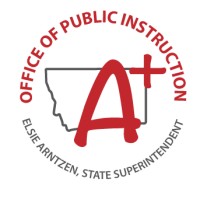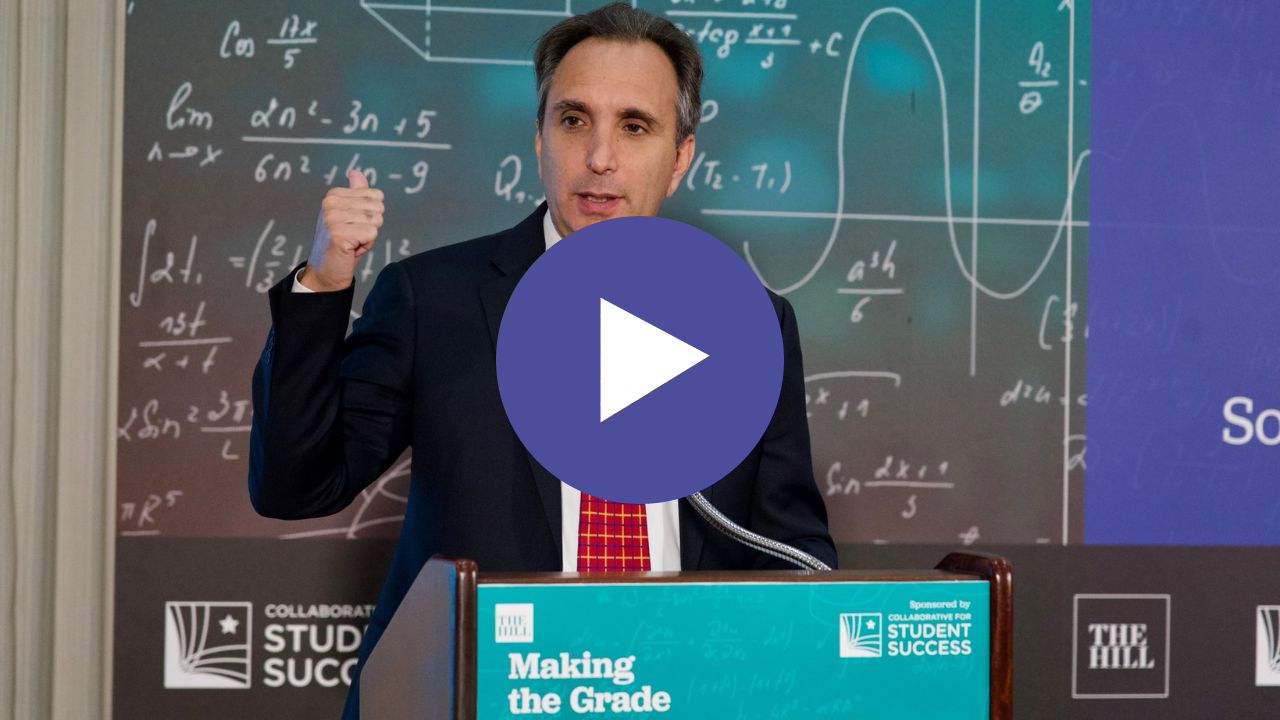Policy Pulse: Montana’s assessment waiver, From Seedlings to Scale, and more
November 14, 2023
Policy Pulse — Fall 2023
There’s more stirring than just the flutter of leaves and the scent of campfires this fall. A tangible shift is underway, marked by a growing movement towards more personalized, competency-based ecosystems.
For example, several Missouri schools have had enough of “business as usual” in the classroom and decided to do something about it. These 20 schools, known as the Success-Ready Students Network, asked the state to waive their traditional summative assessments and pushed instead for a competency-based model and assessment system that measures what students know and are able to do in order to immediately inform instruction. Missouri approved the request in August, but there is tension with the U.S. Department of Education’s (USED) grade-level assessment and accountability structure. For now, the districts have to do what they think is best for students and ensure mastery of content while still being responsible for administering the state’s annual test. These districts are currently looking for a waiver with USED.
In this edition of the Policy Pulse we’ll delve deeper into the tension between federal requirements and the needs of states and school communities, especially in the post-pandemic era. We’ll examine this through Montana’s recent assessment and accountability waiver, as well as the USED’s Request for Information (RFI) on developing a more innovative assessment pilot. On the push for more personalized, competency-based systems there’s more from my colleague Joel Rose on the shift to grade bands in California. Additionally, the Institute of Education Sciences (IES) is pushing for more development of innovative learning models and other approaches. Finally, there’s also a summary and link to a great conversation about the future of math put on by The Hill.
Feds Approve Montana’s Waiver Request for Annual State Assessment
Montana dedicated significant effort to develop a fresh approach to English language arts and math assessments for grades 3-8 in the 2023-24 school year, moving away from the conventional summative assessment and semester-based intervals. As State Superintendent Elsie Arnzen indicated, there are a number of reasons to move away from the current system:
- It’s not helpful to the kids—they don’t ever see the results
- It’s not helpful to teachers—scores don’t come in until the next school year
- It’s not helpful to families—it doesn’t tell them exactly what their kids have mastered and what they still need to learn in order to be on grade-level (or CCR).
The challenge for Montana was to convince the USED to approve something different that is more focused on what’s best for Montana students. The state pushed for several changes in thinking:
1. Rather than taking a big test at the end of the year, students will take shorter quizzes throughout the year
2. Teachers now have the permission structure to determine when their students have mastered grade-level material
3. Students, teachers, and families will get the results almost immediately and teachers can now use that information to help meet each child’s individual needs
While many are applauding this waiver, for Montana this is not the assessment system they ultimately want. It is only a small step due to what is allowable by current federal law. To be clear, this new system does not support personalized, competency-based education. The current waiver design is teacher-determined and classroom-based assessment. There is also real tension between the current peer review system—designed for a single summative test—that will be used to evaluate Montana’s shift in philosophy. Over time, the state hopes to be approved for additional waivers where its assessment and accountability system can move away from the federal government’s insistence on maintaining an age-based system and instead allows the state to meet each child where they are and provide them with an individualized pathway to get them to where they need to be. We’ll continue to provide updates as Montana pushes for additional flexibility and pushes on the existing peer review process.
Changes to the “Innovative Assessment” in ESSA?
This past spring, the USED requested information on successful approaches to innovative assessment implementation and potential improvements to the Innovative Assessment Demonstration Authority (IADA). The purpose of the RFI was to encourage more states to pursue IADA and improve statewide assessment. New Classrooms provided comments on the current barriers in the Department’s regulations that currently preclude a state from applying for IADA.
We believe there are three significant barriers—rooted in the regulations and underlying statutory requirements of the Every Student Succeeds Act (ESSA)—that prevent a state from implementing a competency-based assessment system:
1. You cannot have innovative assessments without innovative accountability. Accountability metrics under ESSA are still designed to record student growth on traditional grade-level assessments. Instead, states need flexibility to implement complementary innovative accountability systems. We need an ability to produce a personalized, competency-based (PCB) assessment system that provides even more transparency
2. States are still required under IADA to make annual determinations of proficiency for each student (and school) based on grade-level content standards. This linkage to measures of grade-level proficiency should be modified to allow for PCB, provided that all students in that system demonstrate mastery by a certain period (e.g., end of 8th grade)
3. States are still required under IADA to demonstrate comparability and accountability reporting that is wholly reliant on state grade-level standards, every year. Provided the appropriate innovative guardrails are in place, states participating in IADA should not have to demonstrate comparability of the new innovative assessment system.
Unfortunately, at a recent convening of states and the USED to discuss the past, present, and future of IADA, the proposed changes to IADA focused more on regulatory adjustments and not on what it would take to build a truly innovative pilot of assessment designs. Some recommendations, like removing the participation cap of seven states, is something we argued for and should be applauded. But instead of attempting to just amend the technical aspects of IADA, the Department should recommend statutory changes to ESSA to remove barriers to open up the demonstration authority to true innovation, including personalized, competency-based assessments and ecosystems.
From Seedlings to Scale
IES’ National Center for Education Research (NCER) solicited input this fall in an RFI for the new program within their Accelerate, Transform, and Scale (ATS) initiative called “From Seedlings to Scale” (S2S). This initiative was directed and funded by Congress in the Consolidated Appropriations Act, 2023.
As we’ve noted in the past, this grant, connected to the proposed creation of the National Center for Advanced Development in Education at IES, aims to provide “quick-turnaround high-reward, scalable solutions intended to improve education outcomes for all students.” Further, Congress suggested research and development (R&D) activities such as breakthrough technologies, new pedagogical approaches, and innovative learning models for the new funding opportunity. We are excited to see IES follow through with Congress’s directive and start the process of delivering high-risk, high-reward research and development on transformative, student-centered solutions.
New Classrooms has offered comments on how the S2S grant program could be structured to ensure true innovation and best support the development and implementation of transformative solutions throughout the entire funding cycle. A few of our main ideas include:
- This grant must focus on the development, not just the research of innovative approaches to teaching and learning
Solutions that are past prototype but aren’t quite at scale should not be excluded from this opportunity - Learner variability, skill acquisition, and pace are needed areas of R&D focus to understand unfinished learning and ensure student-centered learning outcomes
- In order to ensure success of products developed through this grant program, IES must collaborate with other federal education actors to break out of the current grade-level structure that dictates evaluation and implementation
- State partners and schools are important partners in the development of new innovative education products and must be included in any applicant team
More on California’s Math Framework
Last month I shared with you California’s newly adopted math framework that allows teachers to instruct in grade bands (as opposed to solely grade level), which is a huge education landscape shift toward innovation and personalization. My colleague Joel Rose wrote about this shift in a recent op-ed in EdSource.
Making the Grade: Solving the U.S. Math Problem
From my colleague Alex Morris: We were thrilled to share New Classrooms’ insights on skill acquisition and the pace of learning in September at The Hill event “Making the Grade: Solving the U.S. Math Problem.” Sponsored by the Collaborative for Student Success, policymakers and education changemakers gathered from around the country to address the challenges faced by math educators and students.
In his opening talk, Joel Rose spoke about the importance of thinking differently when it comes to solving unfinished math learning and moving outside the bounds of our current grade-level structure. Rather, he underscored the importance of shifting towards personalized, competency-based learning. This approach meets students where they are and allows them to learn math skills over multiple years, ultimately preparing them for college and career.
What We’re Reading
- Burgum highlights Building Blocks for Success at seventh annual Summit on Innovative Education Gov. Doug Burgum kicked off the seventh annual Governor’s Summit on Innovative Education at Cheney Middle School in West Fargo, highlighting how North Dakota is focusing on the Building Blocks for Success to improve outcomes for students (North Dakota Office of the Governor)
- As Concerns About Student Progress Deepen, Here’s How To Think About Policy Options To Drive School Innovation As educators, policymakers, and the media fret that the unprecedented levels of federal investment in our nation’s schools during the pandemic haven’t had the impact that they had hoped on helping students rebound, some have asked how policy can help schools rethink and reinvent schooling rather than stick with the status quo (Forbes)
- Five Questions for IES Director Mark Schneider on “DARPA-ED” Mark shares important information and context on what IES is trying to do to rethink education R&D and why. (Eduwonk)
- Teacher Shortages Bring To Mind The Saying ‘Necessity Is The Mother Of Invention’ “Fueled by teacher shortages… Zoom-in-a-Room” is making a comeback (Forbes)
- Forget ChatGPT — Extractive AI Is the Real Game-Changer for Teachers, Students Artificial intelligence is here to stay. Schools can embrace it and seize the opportunities it offers or try to resist and become obsolete (The74)
- ACT test scores fall to lowest levels in 32 years The class of 2023 had the worst ACT performance in more than three decades, according to newly released data from the nonprofit that administers the college admissions test (Axios)
To receive the Policy Pulse and other policy-related communications from our team, subscribe to our newsletter.




